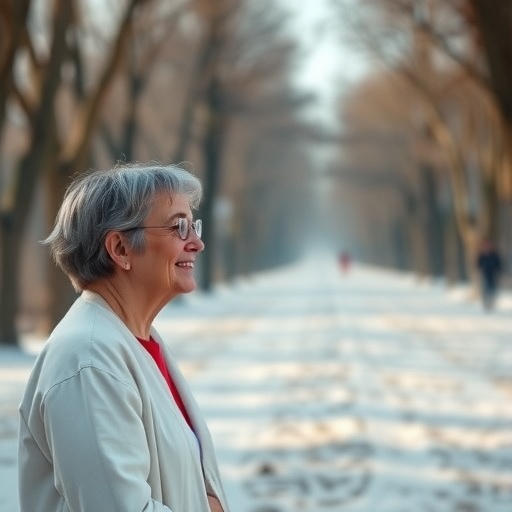The COVID-19 pandemic has undeniably reshaped human interactions and activities, leading to a profound shift in how people perceive and utilize solitude. While many experienced solitude as an oft-unpleasant consequence of lockdowns and social distancing measures, emerging research highlights the diverse ways in which individuals of different ages navigate and embrace this experience. In particular, a study conducted by Thomas et al. sheds light on the age-related variations in using solitude as a resource during these challenging times, indicating that our relationship with solitude is deeply intertwined with our developmental stage and psychological needs.
One of the key insights from the study revolves around the distinct experiences of solitude across various age groups. Young adults, for instance, often regarded solitude as a period of self-exploration and personal growth. Isolated from their usual social contexts, many found the opportunity to delve into interests and hobbies that had previously been overshadowed by the demands of a more conventional lifestyle. This age group exhibited a unique adaptability, often turning to creative pursuits and online platforms as means of connection and expression, effectively reinventing solitude as a canvas for exploration rather than a void of loneliness.
Conversely, middle-aged individuals presented a more complex relationship with solitude. For many, the period of isolation prompted reflections on life achievements and aspirations. While some embraced solitude as a necessary pause, allowing for deep introspection, others experienced heightened feelings of disconnectedness and anxiety. This dichotomy was palpable, as some leveraged their newfound alone time to reassess personal goals and professional ambitions, while others faced challenges stemming from prolonged isolation, revealing an intricate balance between embracing solitude and yearning for social engagement.
Among older adults, the study uncovered yet another layer of complexity when it came to experiencing solitude. Many older individuals reported feelings of vulnerability during the pandemic, heightened by concerns over health and safety. Solitude, in this demographic, frequently evoked a blend of acceptance and nostalgia, with some using these quieter moments to reflect on life’s journey. While older adults often face increased social isolation compared to their younger counterparts, the study illustrated that solitude could also serve as an opportunity for peace, contemplation, and connection with cherished memories. This duality underscores the multifaceted nature of solitude, highlighting its capacity to provide comfort or exacerbate feelings of loneliness.
The psychological implications of solitude during the pandemic offer essential insights into mental well-being across age groups. The ability to effectively utilize solitude as a resource significantly depended on pre-existing coping mechanisms and emotional resilience. The research found that those with a robust foundation of self-awareness and emotional intelligence tended to transform solitude into a constructive space. They engaged in practices such as mindfulness, journaling, and creative expression, which supported their mental health and fostered an ability to embrace the silence rather than succumb to its potential loneliness.
In contrast, individuals who struggled with their emotional regulation often found solitude challenging. Negative thought patterns and feelings of anxiety were amplified in solitary conditions, resulting in a pernicious cycle where loneliness perpetuated further isolation. This study starkly illustrated the profound impact of mental health on how solitude is perceived and engaged with, underscoring the necessity for tailored interventions that consider age, emotional resilience, and personal context.
Moreover, the study revealed gender-based differences in how solitude was utilized across all age groups. Females often reported leveraging solitude for reflective practices and nurturing personal development, whereas males tended to fill their solitary moments with distractions or passive consumption of media. This finding elucidates the societal and cultural narratives surrounding gender that may dictate how individuals experience and respond to solitude during periods of enforced isolation.
The pandemic also catalyzed a reevaluation of social connections and relationships, prompting individuals across every age group to reassess their priorities. With social interactions limited, many sought to deepen the quality of their existing relationships rather than expand their social circles. This transformation has implications for how we approach solitude moving forward, as individuals may become more intentional about when and how they choose to engage with solitude versus social interactions.
As communities gradually emerge from the shadows of the pandemic, the lessons learned from these variations in solitude utilization can inform future discussions about mental health and well-being. By fostering environments that promote open dialogue about the significance of solitude, societies can better support individuals navigating their emotional landscapes. This research prompts a broader conversation about the value of solitude not only during crisis but also within the context of everyday life.
While solitude may evoke a mix of reactions, it stands as an integral part of the human experience. Understanding that different age groups harness solitude differently can empower individuals to seek meaningful interactions with their solitary moments—transforming what could be perceived as loneliness into opportunities for self-discovery and growth. As the world continues to navigate the complexities wrought by the pandemic, the insights provided by Thomas et al. serve as a reminder of the profound capacity for human resilience and adaptability.
In conclusion, the study by Thomas and colleagues highlights the multifaceted relationship between age, solitude, and psychological well-being during the COVID-19 pandemic. By recognizing that solitude can serve as both a refuge and a challenge, we can foster a broader understanding of its role in our lives. Moving forward, embracing the benefits of solitude while being mindful of its potential pitfalls will be crucial in nurturing mental wellness across all ages.
Subject of Research: Age-related variations in using solitude during the COVID-19 pandemic
Article Title: Age-Related Variations in Using Solitude as a Resource During the COVID-19 Pandemic
Article References:
Thomas, V., Callahan, M., Smith, J.L. et al. Age-Related Variations in Using Solitude as a Resource During the COVID-19 Pandemic.
J Adult Dev (2025). https://doi.org/10.1007/s10804-025-09542-w
Image Credits: AI Generated
DOI:
Keywords: COVID-19, solitude, age-related differences, mental health, psychological resilience.




